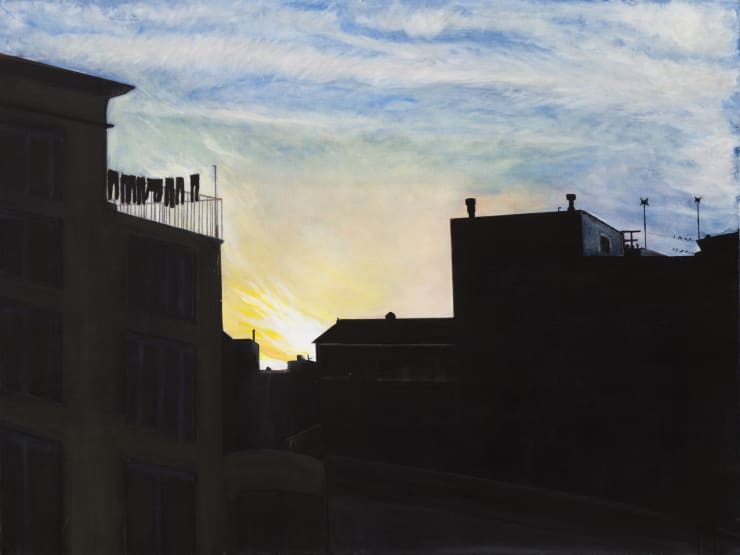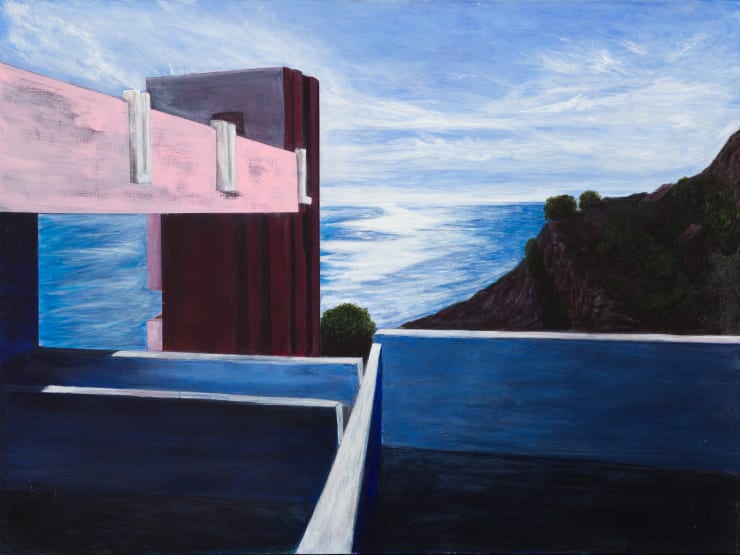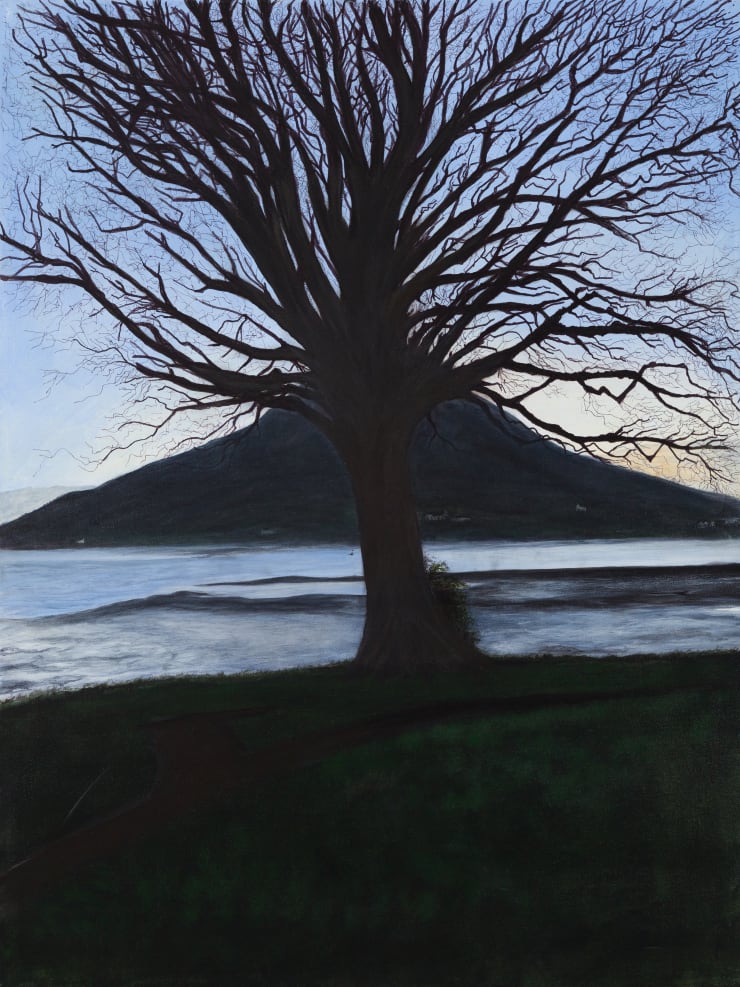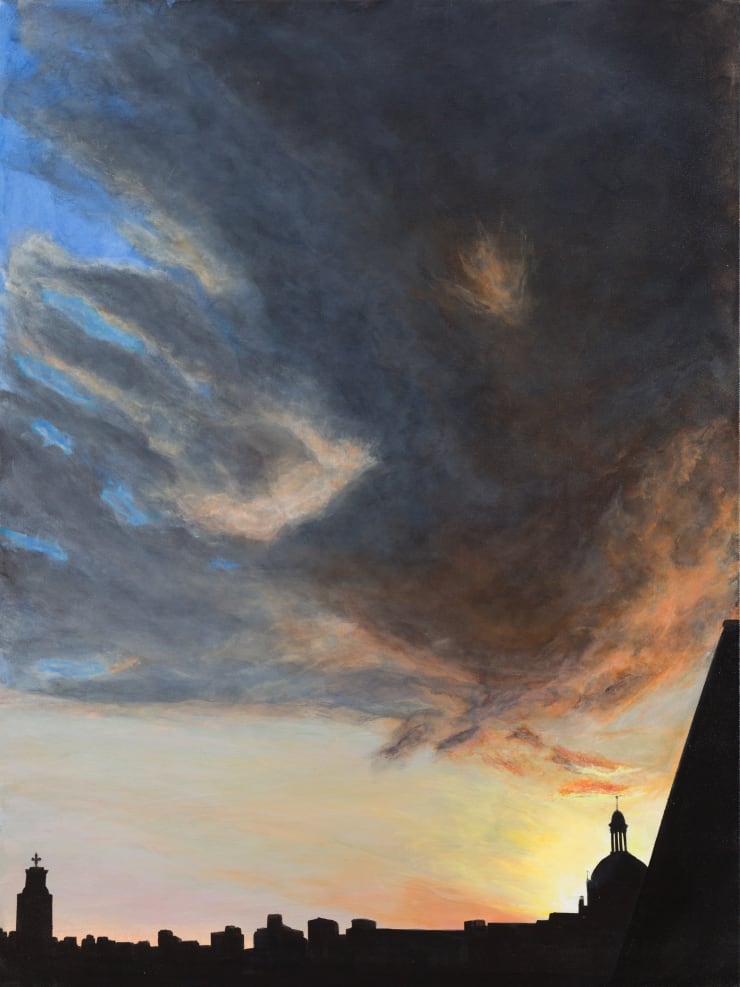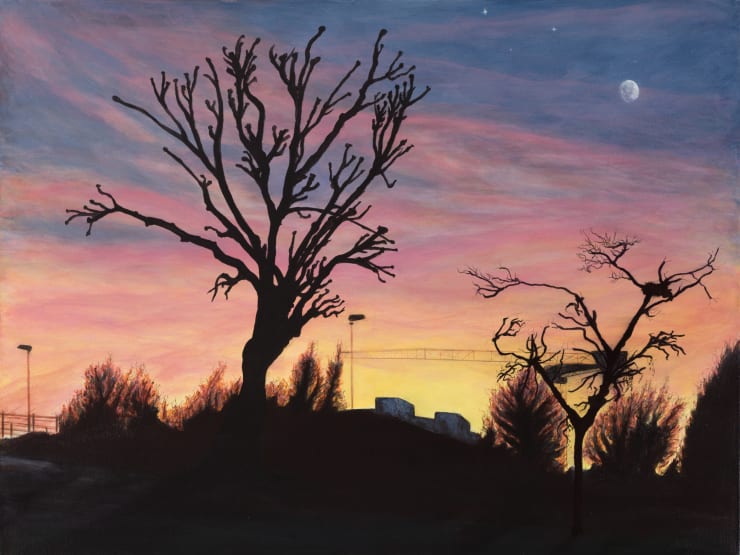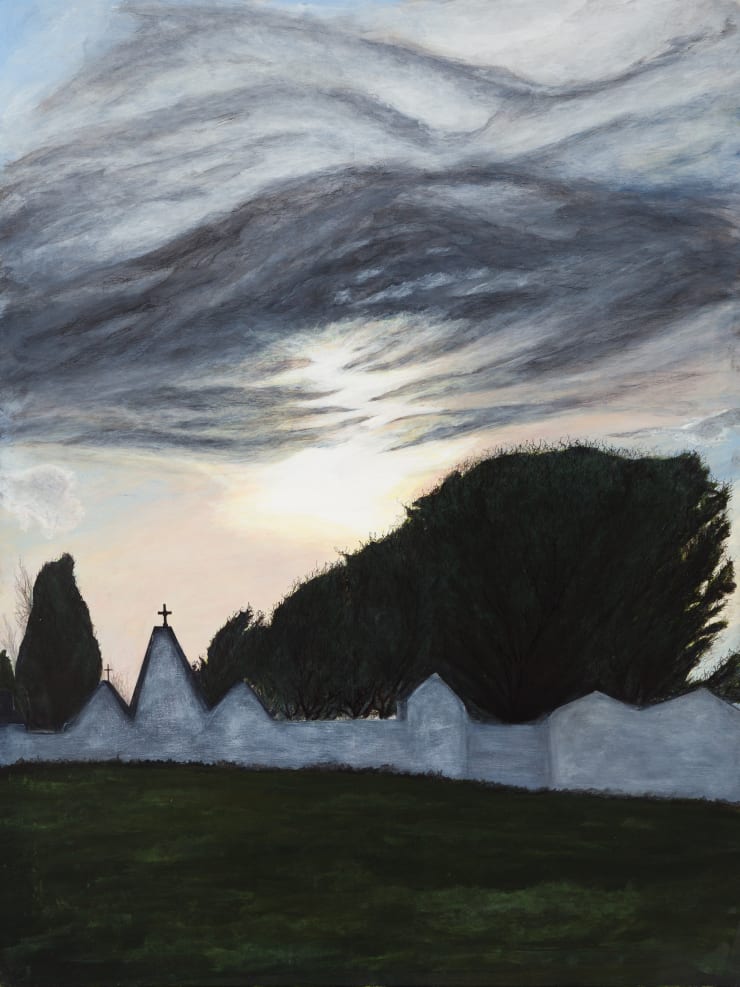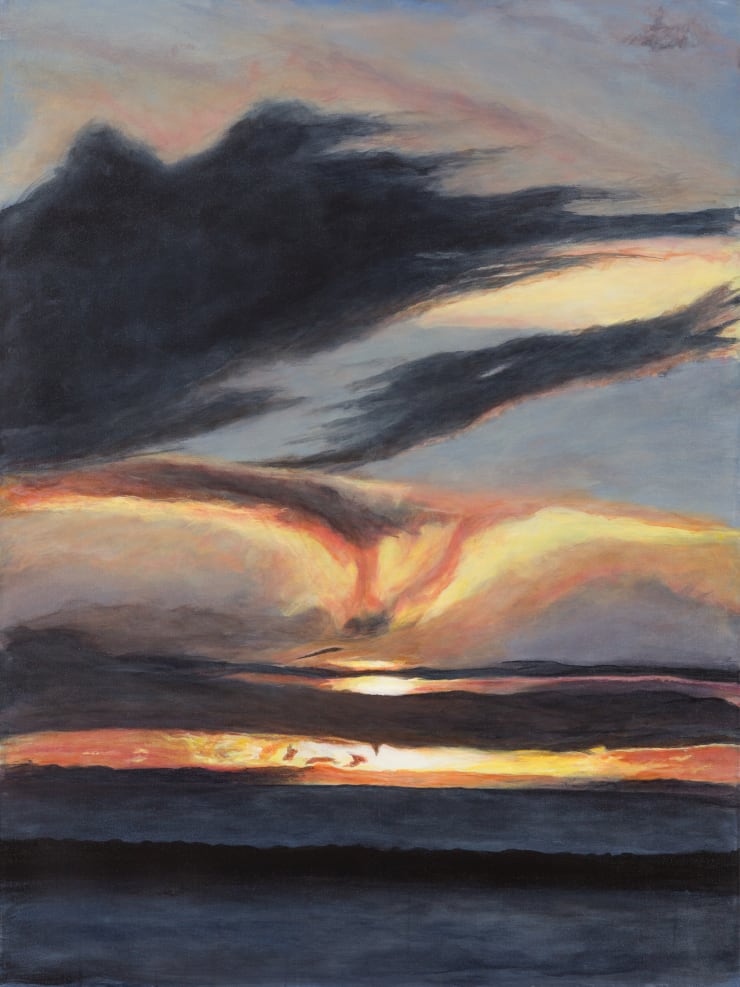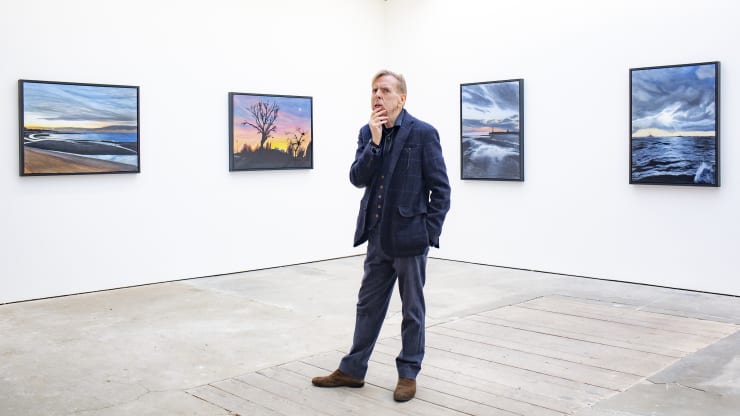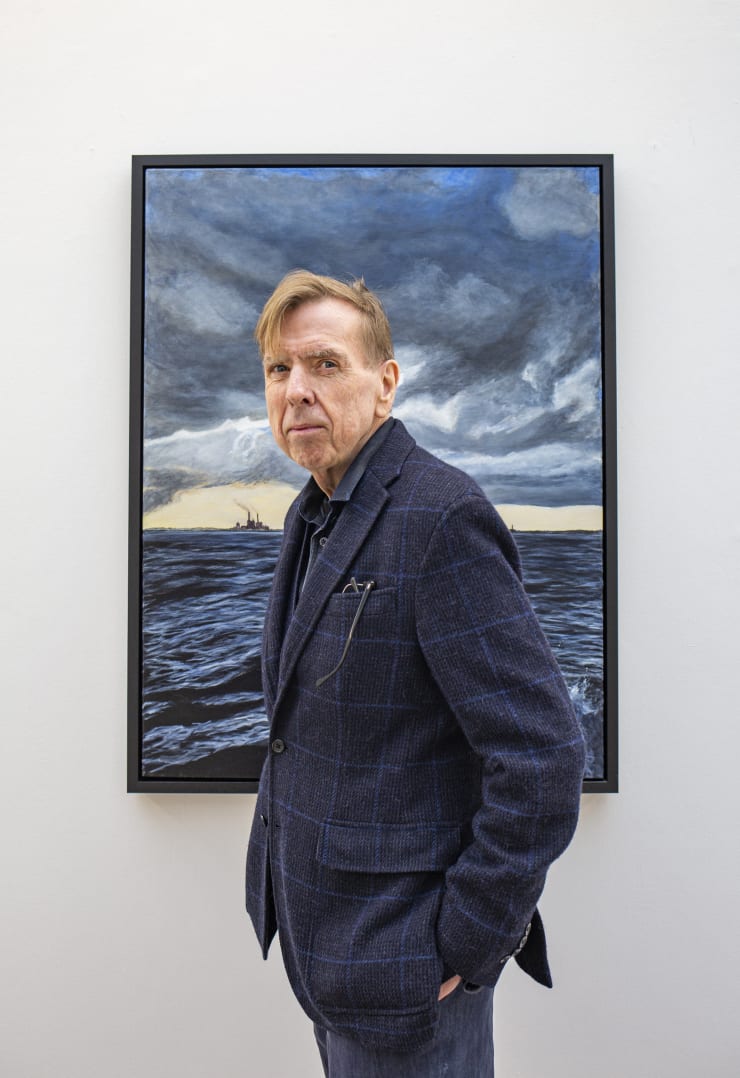Timothy Spall: Out of the Storm
To many of us, especially in the UK, Timothy Spall needs no introduction. He is an actor well-known and famous enough to be a household name. His thorough preparation for his award-winning role as Mr Turner in the eponymous film, laid the groundwork for this foray into painting. This experience provided the spark and confidence to set himself a rigorous and public challenge. Mounting such an exhibition is not done lightly, and Pontone Gallery is delighted to present Spall's inaugural solo exhibition in London. The teenage Spall had to choose between "art, acting or army" - here we see an unexpected chance to revisit a missed opportunity.
Timothy Spall was brought up by the Thames in Battersea, the dark river a constant presence, a reminder of the ebb and flow of far-flung connections and possibilities. In later life he sailed his sea-going barge and developed a further acquaintance with the ocean. He is a man in motion, scanning the distant horizon for material.
Timothy Spall is an autodidact. He is a man who is constantly enquiring into, and schooling himself in, the 'serious diversions' of life. One such pursuit is painting. This is a compact and thematically-coherent sequence of pictures. He offers up a series of brooding land and seascapes, uniform in size, that are episodic documents of the painter's close attention to the world around him. The pictures are a diary of a travelling life, recording real places, the where and when, glimpsed, then fixed, in passing. These are not simple representations, but are heightened in mood and atmosphere. The intensity is ratcheted-up. A storm is often brewing, dark shadows fall and modulated light streaks across sky, sea and land. Spall's eye alights on significant motifs: a roiling ocean, a sanguine sunset, a stand of twisted trees, a mysterious ruin, dirty scudding clouds. His is a world of elemental churning, punctuated by moments of calm observation.
Spall's technique is hard-won. He applies himself in a painstaking and disciplined way. He constantly asks himself: "How on earth do I do this?" Stubbornly dealing with the veracity of things and the technical problem of representation, he achieves an authentic sense of a real and immanent presence. His use of colour is subtle. Skies are tinted with lemon yellows and tangerine oranges, which glow against blue-grey tonalities. He demonstrates a preference for dramatic silhouette graphically picked out in inky-blacks and carbonised blues. Architectural form and detail is finely-drawn. Trees are an intricate network of interwoven tendrils. A more gestural handling of the brush is used to describe sea and sky. Complex layering and vigorous scumbling builds an impression of atmospheric weather effects.
As with his artist heroes and fellow Londoners, Blake and Turner, who saw God in the world they painted, Timothy Spall expresses an animating and sublime life-force, which imbues his subjects with symbolic power and poetic imagination. The paintings convey a sense of reaching out to that which is slipping past. Spall makes landfall, grasps the significant and anoints it in paint.
For SALES & PRESS enquiries
Please email us here or get in touch on WhatsApp.
-
 It’s Here, Will It Stay? Camargue, 2021Acrylic on canvas101.5 x 76 cm
It’s Here, Will It Stay? Camargue, 2021Acrylic on canvas101.5 x 76 cm
40 x 30 in -
 Harbouring a Sadness, Margate, 2021Acrylic on canvas101.5 x 76 cm
Harbouring a Sadness, Margate, 2021Acrylic on canvas101.5 x 76 cm
40 x 30 in -
 The Guarding Bow Wave, 2021Acrylic on canvas101.5 x 76 cm
The Guarding Bow Wave, 2021Acrylic on canvas101.5 x 76 cm
40 x 30 in -
 Connecting Nothing With Everything on Margate Sands, 2021Acrylic on canvas76 x 101.5 cm
Connecting Nothing With Everything on Margate Sands, 2021Acrylic on canvas76 x 101.5 cm
30 x 40 in -
 Rootless Landing, 2021Acrylic on canvas91 x 122 cm
Rootless Landing, 2021Acrylic on canvas91 x 122 cm
36 x 48 in -
 Elsinore, 2021Acrylic on canvas76 x 101.5 cm
Elsinore, 2021Acrylic on canvas76 x 101.5 cm
30 x 40 in -
 Washing Worships as Day Declines, 2021Acrylic on canvas76 x 101.5 cm
Washing Worships as Day Declines, 2021Acrylic on canvas76 x 101.5 cm
30 x 40 in -
 Dying of the Lake Light, 2021Acrylic on canvas76 x 101.5 cm
Dying of the Lake Light, 2021Acrylic on canvas76 x 101.5 cm
30 x 40 in -
 Concrete Confection Against the Med, 2021Acrylic on canvas76 x 101.5 cm
Concrete Confection Against the Med, 2021Acrylic on canvas76 x 101.5 cm
30 x 40 in -
 Bald Tree, Blue Loch Mountain Face Off, 2021Acrylic on canvas101.5 x 76 cm
Bald Tree, Blue Loch Mountain Face Off, 2021Acrylic on canvas101.5 x 76 cm
40 x 30 in -
 Naked Yearning, High Desert, 2021Acrylic on canvas76 x 101.5 cm
Naked Yearning, High Desert, 2021Acrylic on canvas76 x 101.5 cm
30 x 40 in -
 Blitz Dream, Smithfield, 2021Acrylic on canvas101.5 x 76 cm
Blitz Dream, Smithfield, 2021Acrylic on canvas101.5 x 76 cm
40 x 30 in -
 My Mum, Sylvia, Briefly Reincarnated as a Butterfly on a Church Windowsill as if on an Aerial Bombing WW2 Photo, 2021Acrylic on canvas76 x 101.5 cm
My Mum, Sylvia, Briefly Reincarnated as a Butterfly on a Church Windowsill as if on an Aerial Bombing WW2 Photo, 2021Acrylic on canvas76 x 101.5 cm
30 x 40 in -
 Waveless Today, Nazare, 2021Acrylic on canvas76 x 101.5 cm
Waveless Today, Nazare, 2021Acrylic on canvas76 x 101.5 cm
30 x 40 in -
 Comfort in the Shadow, 2021Acrylic on canvas76 x 101.5 cm
Comfort in the Shadow, 2021Acrylic on canvas76 x 101.5 cm
30 x 40 in -
 Heaven Beyond the Shit-Bin, 2021Acrylic on canvas101.5 x 76 cm
Heaven Beyond the Shit-Bin, 2021Acrylic on canvas101.5 x 76 cm
40 x 30 in -
 Cemetery Siege Wall, Catalonia, 2021Acrylic on canvas101.5 x 76 cm
Cemetery Siege Wall, Catalonia, 2021Acrylic on canvas101.5 x 76 cm
40 x 30 in -
 The Sea Wall, 2021Acrylic on canvas101.5 x 76 cm
The Sea Wall, 2021Acrylic on canvas101.5 x 76 cm
40 x 30 in -
 Pausing the Vastness, 2021Acrylic on canvas76 x 101.5 cm
Pausing the Vastness, 2021Acrylic on canvas76 x 101.5 cm
30 x 40 in -
 Trunk Road to Ruin, 2021Acrylic on canvas76 x 101.5 cm
Trunk Road to Ruin, 2021Acrylic on canvas76 x 101.5 cm
30 x 40 in
-
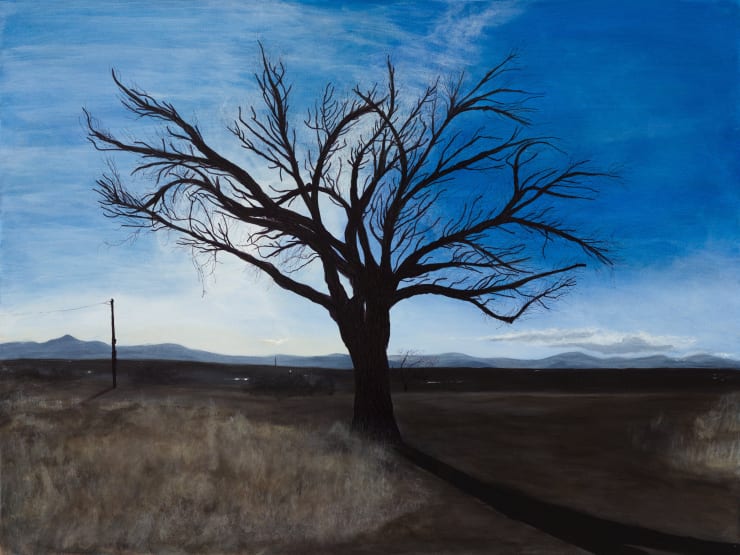
Timothy Spall: Out of the Storm, Pontone Gallery, review: Actor finds his artistic voice in first solo show
Spall's real ability lies in his tonal workFlorence Hallett, iNews, June 23, 2021 -

'Timothy Spall: 'I was crying, swearing and chucking paint''
Anna Bailey, BBC News, June 19, 2021 -
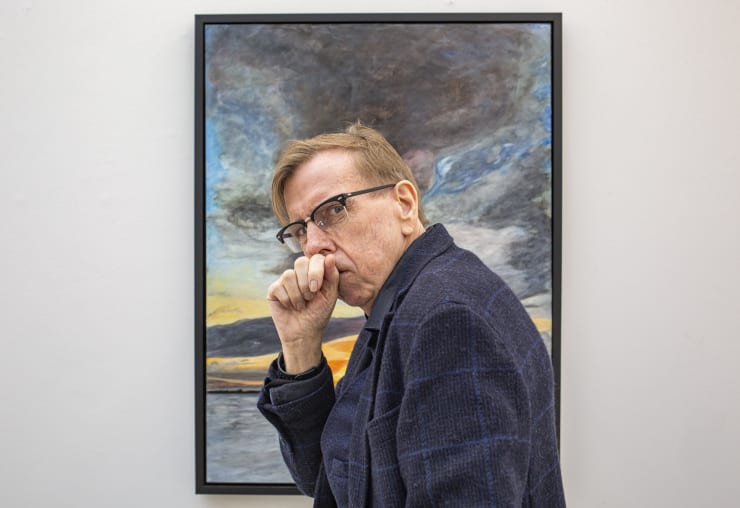
Timothy Spall Comes Out of the Storm at Pontone Gallery
Chris Jenkins, Arts & Collections, May 28, 2021 -

'Actor Timothy Spall on Emerging as an Artist after J.M.W. Turner Role'
Jon Snow, Channel 4 News, May 23, 2021 -
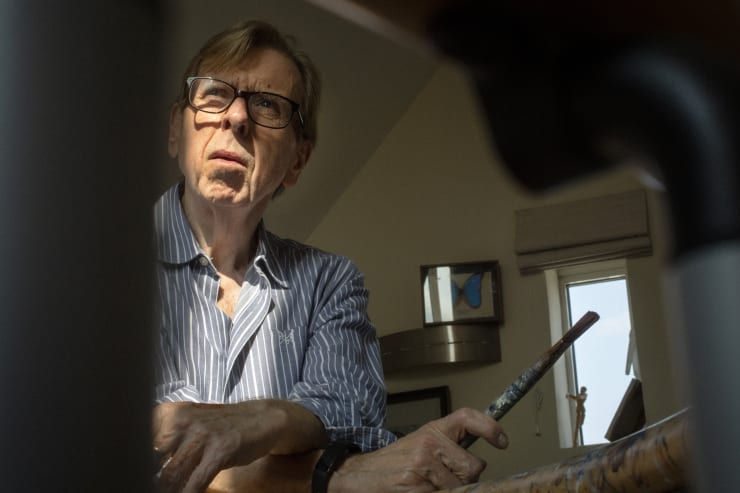
After playing Turner and Lowry, now Timothy Spall has taken up painting for real
Gabrielle Schwarz, Apollo Magazine, May 21, 2021 -

Actor Timothy Spall gets first solo show of his paintings
Star of Mr Turner created 20 works over six-month period after gallery owner saw his talentLanre Bakare, The Guardian, May 3, 2021







